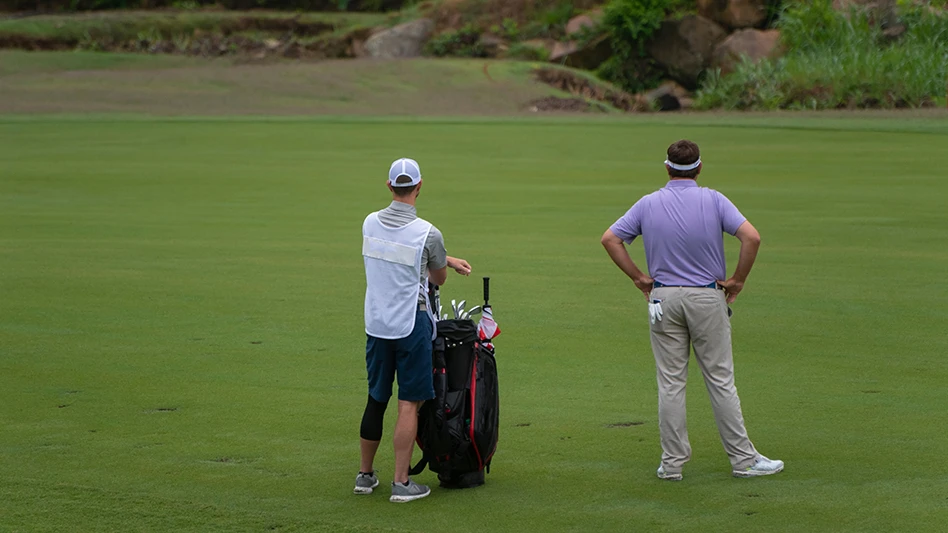

For years in my presentations and writing about the golf industry, I have bemoaned the loss of caddying as a recruitment path into the game.
When assessing the golf participation decline starting around 2000, it seemed evident that something was missing when it came to encouraging newcomers. We pointed to the loss of the teenaged caddie and his or her replacement by the motorized golf cart. It was obvious in a way that could not be disputed, although to be honest, it wasn’t something that could be proved, either. But the explanation made sense.
A few years later, still before the COVID-19 pandemic, it became obvious the maintenance side of the industry was having trouble recruiting labor. Turfgrass school enrollments were also starting to drop. And it seemed to me that, again, part of the explanation was that youth were not being exposed to the game in their early formative years when career ambitions and dreams of professional endeavor were starting to gel. If more teens had started working summers and weekends on golf course crews, I figured, more of them would have been bitten by the lure of the outdoors and turfgrass.
A recent conversation with a modest superintendent and humble former caddie (and now club president) refined my views. I will always be grateful for the eye-opening, 15-minute exchange while gazing out onto their beautiful golf course. I left understanding how the cultures of the caddie yard and the maintenance building produce totally different orientations in life with rather decisive consequences for how things play out professionally.
The old adage holds up well: “once a caddie, always a caddie.” I know from my own experience looping for businesspeople at private clubs on the western side of Long Island’s south shore. Many were ladies and gentlemen; a few were pompous jerks who thought it was OK to verbally abuse their bag-toter or simply to act out their behavioral ticks in the absence of their therapist. Golf was the great equalizer. You learned within three holes all you really needed to learn about a golfer to find out what he or she was like a person.
You learned never to be afraid of anyone, rich or famous. They could be just as smart, befuddled or scared as anyone. When it came to the shot they faced, you had the information they needed about the yardage, slope, bounce and unseen dangers. You also had the inside dope on whether they were nervous, confident, clueless or cautious and whether they were up to the moment. Of all the skills needed to be an effective caddie, the most valuable one was as a mobile therapist.
In contrast to the intense interaction between player and caddie, the maintenance crew worked by habit to avoid golfers altogether. The crew began its work hours before most golfers got to the course. If bunker work, mowing or hand watering occurred during play, the crew learned to step aside momentarily and let players through. The occasional hand wave or “thank you” from afar was about as close as crew members got to golfers. The less contact, the better. Whatever cultural biases of class distinction that workers might have had toward those privileged with membership were reinforced, not counteracted, during the workday.
Small wonder that, years later, most superintendents and those who grew up as laborers still seem to feel awkward interacting with client-golfers. At meetings, they are deferential. In casual conversation, they are not likely to engage in the kind of half-joking, half-serious, give-and-take of comfortable repartee and banter that (former) caddies are comfortable with. It comes from a certain lack of self-confidence that ultimately puts the superintendent and staff in a subordinate status. The status is reinforced by the smug superiority of too many golfers (not all!) who think their research consisting of two articles found on Google makes them an expert agronomist.
There’s probably more similarity than difference in the respective cultures of the two work yards. The caddie yard, including Monday play opportunities, were great occasions for a no-nonsense approach to people. If you knew your stuff, your peers knew it. If you said or did something out of line, someone wouldn’t hesitate to tell you. If they thought it was needed, they would slap you down verbally or even physically. It was not exactly a place for “political correctness” when it came to perceived slights. It was a tough working environment, one that taught you fast how to grow up and earn respect.
Either way, those were — and to some extents still are — great working cultures for a kid becoming an adult. Valuable life skills are to be found there. It’s part of the business that makes golf such a great game.

Explore the June 2023 Issue
Check out more from this issue and find your next story to read.
Latest from Golf Course Industry
- From the publisher’s pen: Conscientious of a bigger role
- Bernhard and Company partners with Laguna Golf Phuket
- Terre Blanche showcases environmental stewardship
- VIDEO: Introducing our December issue
- Bernhard and Company introduces Soil Scout
- Nu-Pipe donates to GCSAA Foundation’s Centennial Campaign
- GCSAA enhances golf course BMP tool
- Melrose leadership programs sending 18 to 2026 GCSAA Conference and Trade Show





